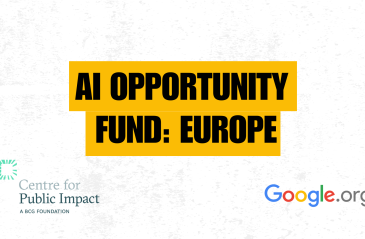
The power of storytelling in climate leadership

“Rather than everyone doing a piece of the puzzle we wanted to create a way to link that puzzle together"- Olivia Lucas on #collectiveimpact
Share articleFor the #BurnieWorks team in this industrial town in Tasmania, the #FutureGovernment is one where gov and community work hand in hand
Share articleThough "a bit scary at first," #collectiveimpact has brought Burnie's business & education communities together to find employment solutions
Share articleWe put our vision for government into practice through learning partner projects that align with our values and help reimagine government so that it works for everyone.
Photo credit: BurnieWorks
This year's annual Future of Local Government Summit in Melbourne, Australia was full of inspiring stories - of communities driving forward change through local people-powered initiatives and making local government “cool.” The story of Burnie, a small port city of approximately 20,000 people on the North West coast of Tasmania, especially stood out to me.
While this industrial town enjoyed over 75 years as a pulp and paper mill centre, the closure of the mill in 2010 and the decision of Caterpillar - another major employer in town - to move operations offshore in 2015 left the community reeling. When the city founded BurnieWorks in 2014, employable skills were at the top of the agenda.
“At that time, we actually had a fairly high rate of job vacancies, but also a high rate of unemployment because the skills weren't matched to what the job vacancies were,” explains Olivia Lucas, Burnie City Council's Project Officer for Collective Impact.
“The message among young people was ‘there's no jobs and that you have to leave to get the job,' but that wasn't necessarily the case.”
There were a few different government programmes focused on education and employment initiatives, but there wasn't enough coordination across them to lead to the shift in outcomes that the town really needed - for older workers as well as those entering the job market. It was around this time that John Kania and Mark Kramer's work on collective impact started circulating around Burnie City Council, and it was a real “light bulb moment” for the team. They joined dozens of other communities across Australia at the time who also started trialling this approach.
“Burnie's a fairly resilient community - it's always been actively involved in its future - but there was a growing sense that if we just kept doing what we were doing, nothing would change,” explains Olivia, who was brought on in 2014 to help with the coordination.
“Rather than everyone doing a little piece of the puzzle, we wanted to create a way to link that puzzle together so we could use our resources better for the community and avoid duplication.”
BurnieWorks' common agenda, known as Making Burnie 2030, was developed with the input of over 500 members of the community to form a common vision for education, employment and social inclusion in the city. The group is comprised of five working groups - education and industry collaborative BIG, the Employment Partnership Group, intensive education programme Every Day Counts, Grade 5 work exposure programme Dream Big, and the Local Drug Action Team - as well as other partners including social enterprise Hilltop Fresh Produce, early years programme Communities for Children, and the backbone organisation, coordinated by Olivia called the Local Enabling Group.
“I think for everyone, it was a bit scary at first, because in the traditional way of doing things, funding was quite competitive. So it took a lot of coffee meetings and a few little wins along the way,” Olivia recalls.
With the first cohort of students just finishing school, it may be a bit early to measure the success of the BurnieWorks structure to date - but there is no question to Olivia and her team that they are making progress.
A couple years into the Dream Big project, the University of Tasmania conducted an evaluation that clearly showed strong benefits - not only for the students, but also for teachers whose spirits were raised by having more engaged pupils. Olivia says “little wins” like this one have kept the BurnieWorks team going at times when coordination has proven especially tricky.
“The relationship between business and education is much better now and the relationship between our services is much better, so we're confident that is translating into good outcomes for the community overall.”
The Australian federal government is encouraged by Burnie's progress as well, committing nearly 2 million dollars over the next five years to support the team with data collection and evaluation to help measure the impact of their programmes. The Tasmanian government has also been in touch with Burnie leaders about working with them to put the right systems and policies in place at the state level to better support place-based initiatives like BurnieWorks.












